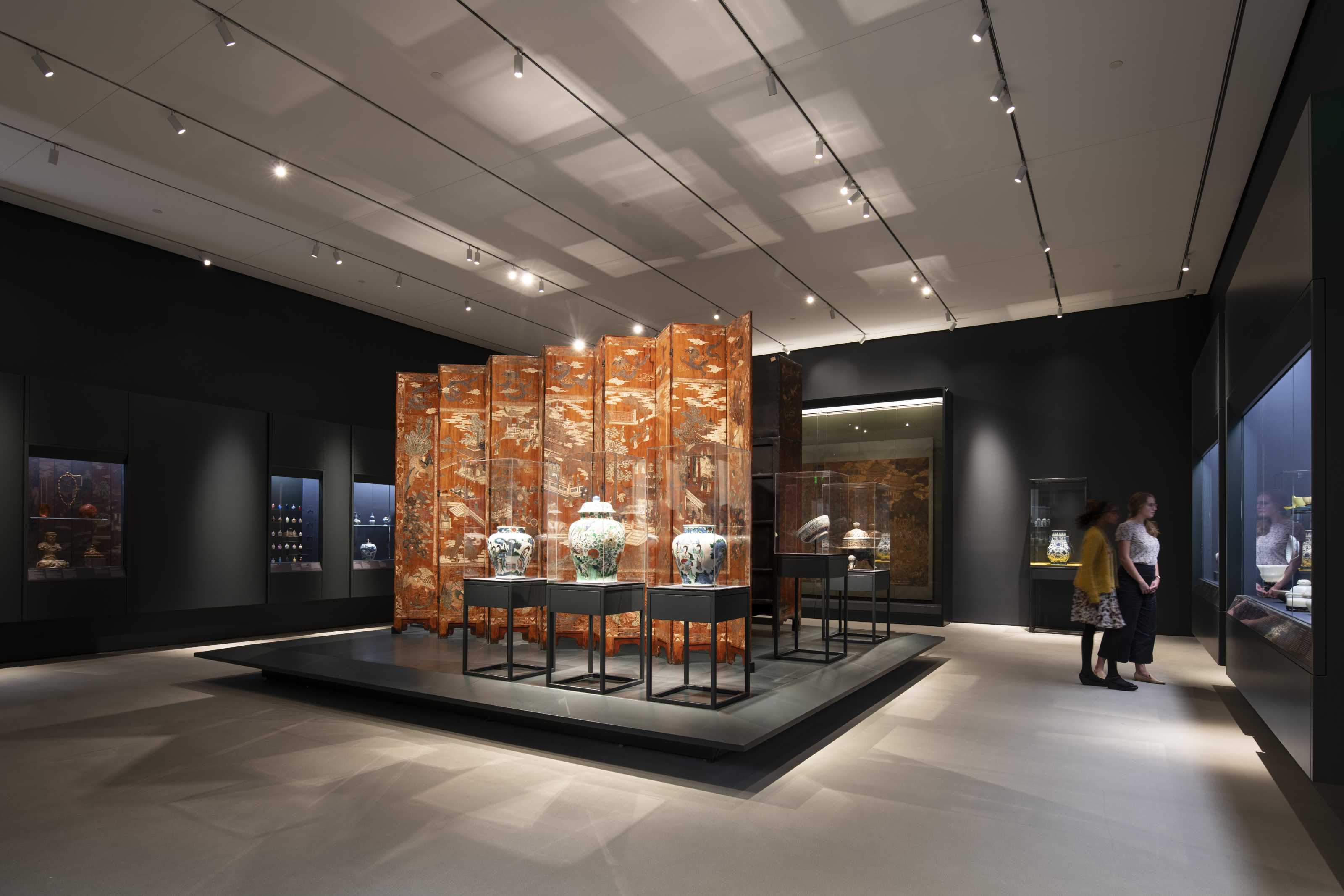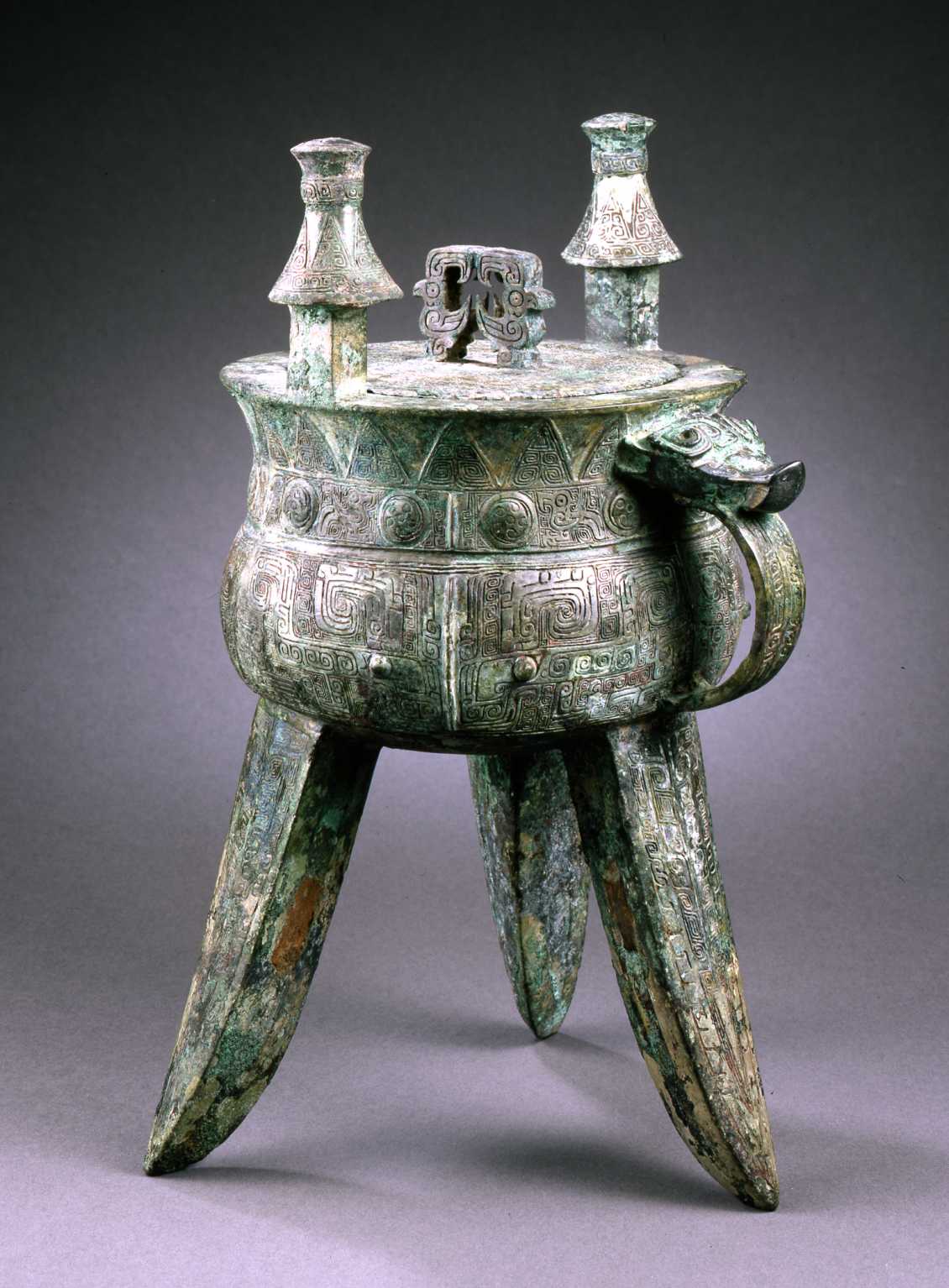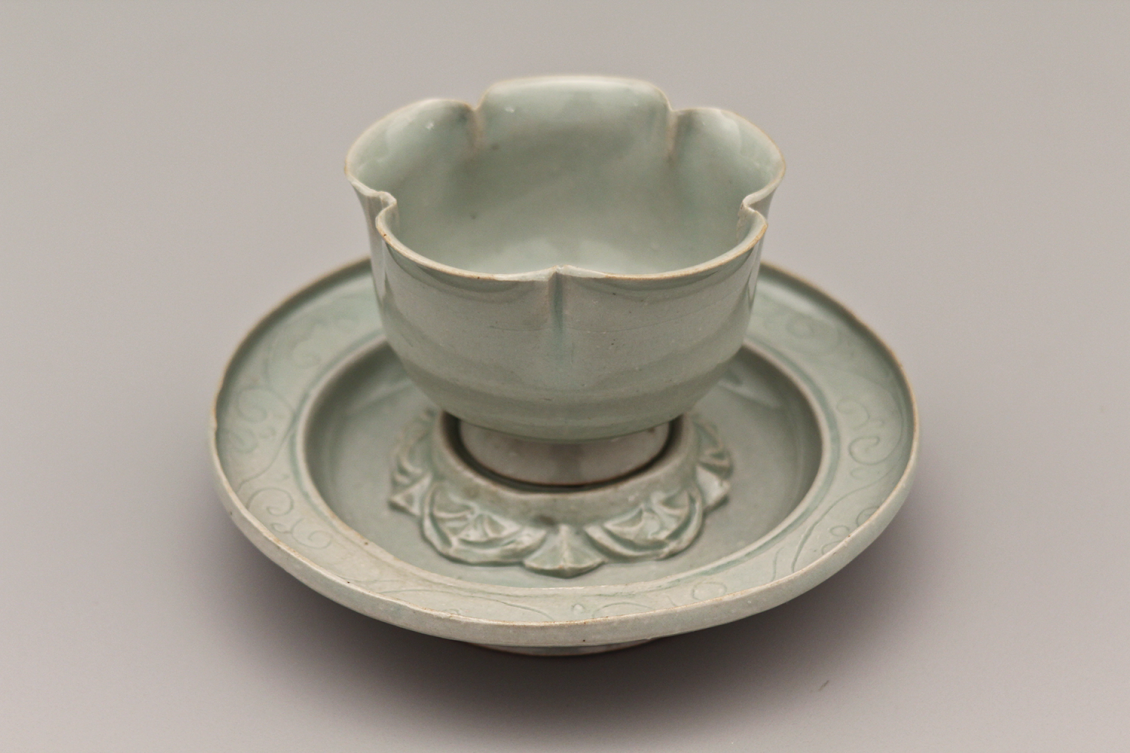Chinese

The Museum's collection of Chinese art, spanning 5,000 years, has grown from the approximately 130 works given by founder Ralph Norton to more than 700 objects. His acquisitions form two outstanding bookends to the Chinese Collection: ancient jade and bronze, and imperial jade and hardstone carvings dating from the Qing dynasty (1644-1912 ) to the Republic period (1912- 1949). A seminal early work from Norton’s gifts includes a 3,200 year-old cast bronze wine ewer (gong) in the form of a dragon, which is a composite of many powerful creatures – tiger, bear, elephant, bird, and antelope. A seminal late work in the collection is an alms bowl with seven buddhas, commissioned in 1777 by the Qianlong Emperor who reigned from 1736 until 1795.
Over the years, Ralph Norton's gifts have been supplemented with other significant works of art illustrating the aesthetic values, technical achievements and cultural beliefs of this vast country. These works include: a painting by Ming dynasty master Tang Yin (1470–1523), titled The Nine Bends River, which links the personal qualities of man with Confucian moral values; one of the world’s finest extant pairs of 17th-century lacquered cabinets (1662–1700) made during the reign of the Qing dynasty emperor Kangxi; and Five Quail, a 13th-century painting influenced by one of China’s best known quail painters, Li An-Zhong (Southern Song dynasty, circa 1120-1160) that sends a subtle message about life in unstable times.
Chinese Collection Highlights

Tripod Wine Vessel (Jia) with Cover, circa 1200 BCE, Shang Dynasty, Anyang Period

Pendant (Pei) in the Form of a Rabbit, 900s BCE, Western Zhou Dynasty

Cup and Saucer, circa 954 – early 1000s, Five Dynasties Period – early Northern Song Dynasty

Five Quail, circa 1200 – 1276, Southern Song – early Yuan Dynasty

Roof-Ridge Fascia Panels with Molded and Applied Decoration of Dragons among Peonies, circa 1550s, Ming Dynasty, possibly Jiajing Reign

Tang Yin 唐寅 (Chinese, 1470-1523), The Nine Bends River, Ming Dynasty

Zhao Changguo 趙 昌 國 (Chinese, active 16th century), Three Taoist Star Lords Playing Weiqi in Autumn Mountains, 1500s, Ming Dynasty

Zhou Kai 周凱 (Chinese, 1779-1837), Landscape, 1819, Qing Dynasty, Jiaqing Reign

Zhou Kai 周凱 (Chinese, 1779-1837), Landscape, 1819, Qing Dynasty, Jiaqing Reign

Zhou Kai 周凱 (Chinese, 1779-1837), Landscape, 1819, Qing Dynasty, Jiaqing Reign

Zhou Kai 周凱 (Chinese, 1779-1837), Landscape, 1819, Qing Dynasty, Jiaqing Reign

Zhang Yuan (Chinese, 1648-1724), Walking with a Staff in Autumn Groves, 1722, Qing Dynasty

Shangguan Zhou (Chinese, 1665-1750), Stormy Landscape, early to mid-18th century, Qing Dynasty

Chime Stones for Individual Mounting (Te-Qing), 1761, Qing Dynasty, Qianlong Reign

Dish with Rim in the Shape of a Mallow Flower, circa 1127 – 1200, Early Southern Song Dynasty

Flask in the Form of a Wine Jar (Hu) with Engraved Decoration, circa 50 – 1 BCE, Western Han Dynasty

Garden Stand, 1573 – 1620, Ming Dynasty, Wanli Reign

Jar for Paintbrushes or Handscrolls, circa 1628 – 1644, Ming Dynasty, probably Chongzhen Reign

Mantel Garniture, circa 1725 – 1735, Qing Dynasty, Yongzheng Reign

Plate with Implements of a Money Changer, circa 1750, Qing Dynasty, Qianlong Period

Wine Ewer (Gong), circa 1200 – 1050 BCE, Shang Dynasty, Anyang Period

Pendant (Pei) in the Form of a Dragon, circa 475 – 400 BCE, Eastern Zhou Dynasty, early Warring States Period

Hibiscus-Form Brush Washer, 1200 –1300, Jin Dynasty – Yuan Dynasty

“Shonzui”-Style Gourd-Shaped Sake Flask (Tokkuri), circa 1621 – 1644, Ming Dynasty, Tianqi – Chongzhen Reign

One of a Pair of Lacquered Cabinets, 1662 –1700, Qing Dynasty, Kangxi Reign

Alms Bowl with Seven Buddhas, 1777, Qing Dynasty, Qianlong Reign

Zhou Kai 周凱 (Chinese, 1779-1837), Landscape, 1819, Qing Dynasty, Jiaqing Reign

Zhou Kai 周凱 (Chinese, 1779-1837), Landscape, 1819, Qing Dynasty, Jiaqing Reign

Zhou Kai 周凱 (Chinese, 1779-1837), Landscape, 1819, Qing Dynasty, Jiaqing Reign

Zhou Kai 周凱 (Chinese, 1779-1837), Landscape, 1819, Qing Dynasty, Jiaqing Reign

Jiang Song (Chinese, active 1490-circa 1563), Seated in Solitude Beside a Stream, 16th century, Ming Dynasty

Attributed to Xing Xian-zhi (Chinese, active early-mid-17th century), The Dragon-Taming Luohan, circa 1600 – 1620, Ming Dynasty, Wanli Reign

Bracelets Depicting Dragons in Clouds, late 19th – early 20th century, Late Qing Dynasty

Circular Box with a Scene of Taoist Immortals, probably 1368 – 1398, Early Ming Dynasty, probably Hongwu Reign

Dragon Jar with Bird Cover, circa 1200 – 1300, Southern Song – Yuan Dynasty

Flower Vase in the Form of a Cong, circa 13th – early 14th century, Southern Song Dynasty – Yuan Dynasty

Hong Punch Bowl with a Scene of the Canton Waterfront, circa 1780, Qing Dynasty, Qianlong Reign

Lion and Grapevine Mirror, late 7th – early 8th century, Tang Dynasty

Owl Plaque, circa 1200 BCE, Shang Dynasty, Anyang Period

The Lantern Festival (Shangyuan Jie), circa 1592 – 1620, Late Ming Dynasty, Wanli Reign

Six-Lobed Bowl with Incised Peonies, circa 1127 – 1162, Early Southern Song Dynasty







